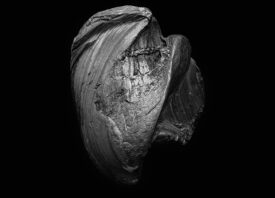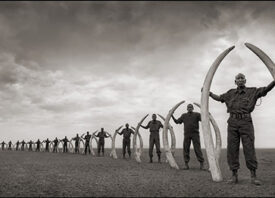Search this site
Portraits Of Remarkable Birthmarks Challenge Us To See Others Differently


What do you see, truly see, when you look at strangers? Maybe you notice their clothes, hairstyle, the way they walk, or perhaps their skin color? How does that inform your perception of the person?
Copenhagen-based photographer Linda Hansen wants to challenge your notion of noticing others. In her new book, Naevus Flammeus, Hansen uses portraiture to explore how we perceive others who might not fit society’s definition of having a “normal appearance” — each of her subjects in the project were born with a skin condition called nevus flammeus (also known as a port-wine stain), a congenital vascular malformation that results in a light pink to deep red birthmark that, for the most part, generally tends to appear as if red wine was splashed across a person’s face or neck.
Some port-wine stains can be tiny, others can become raised and thicken over time — according to a description in Hansen’s book, there have been patients who suffer from eye and brain abnormalities, depending on where the mark is located. So, again: What would you see when you look at a person with a face as interesting as this?
“Every time people see the book, it’s like, ‘Wow, oh it must be hard,” to be a person with a port wine stain, Hansen told Feature Shoot. She can certainly tell you plenty of stories that her subjects have told her about the comments they receive in public: “Did your boyfriend beat you?” “Did you wash the rest of the paint off your face?” “You have your lipstick all over.”
“I compare it to having a tattoo: It’s curious, or a special mark with history. It’s beautiful,” Hansen said. “How come when you have a mark with nature, this is not OK?” In Hansen’s lens, these “natural tattoos” become beauty marks, but something else also happens when you look at the faces long enough: the mark starts to disappear altogether.
Each picture features the subject facing the viewer head on with a stoic expression, looking directly into the lens, confronting the viewer, challenging you to stare back. If you were to see this person on a subway or at the supermarket, you know good and well that it would be impolite to stare. But here, under Hansen’s direction, it is they who stare at you. And the birthmark, as a result of this interaction, when held long enough, reveals itself to be in harmony with the rest of the face’s features.
“I want to make a confrontation,” Hansen said. “How long do you have to look? When do you start to see the other details in the photo? The nose, that the clothes are sitting a little wrong. All the small details which are really important. When you have looked enough at the person, the mark doesn’t become interesting anymore.”
While pop culture’s standard of normalcy is opaque and endlessly malleable, the epiphany of “Naevus Flammeus” is that, the longer you look into a person’s face — no matter what striking differences might exist between you — the stuff that makes you different becomes replaced by something else: familiarity.
“Nobody can say that they’re not affected by how actors and top models look. We all are,” Hansen said. “I think the project is a reminder, for me, that those standards are not what’s important. We have to go against the ideal of what we’re confronted with from all kinds of medias… We all have our things that aren’t correct. And we shouldn’t be correct; that’s what makes someone a person. The differences between us. That is what’s interesting.”








All images © Linda Hansen



